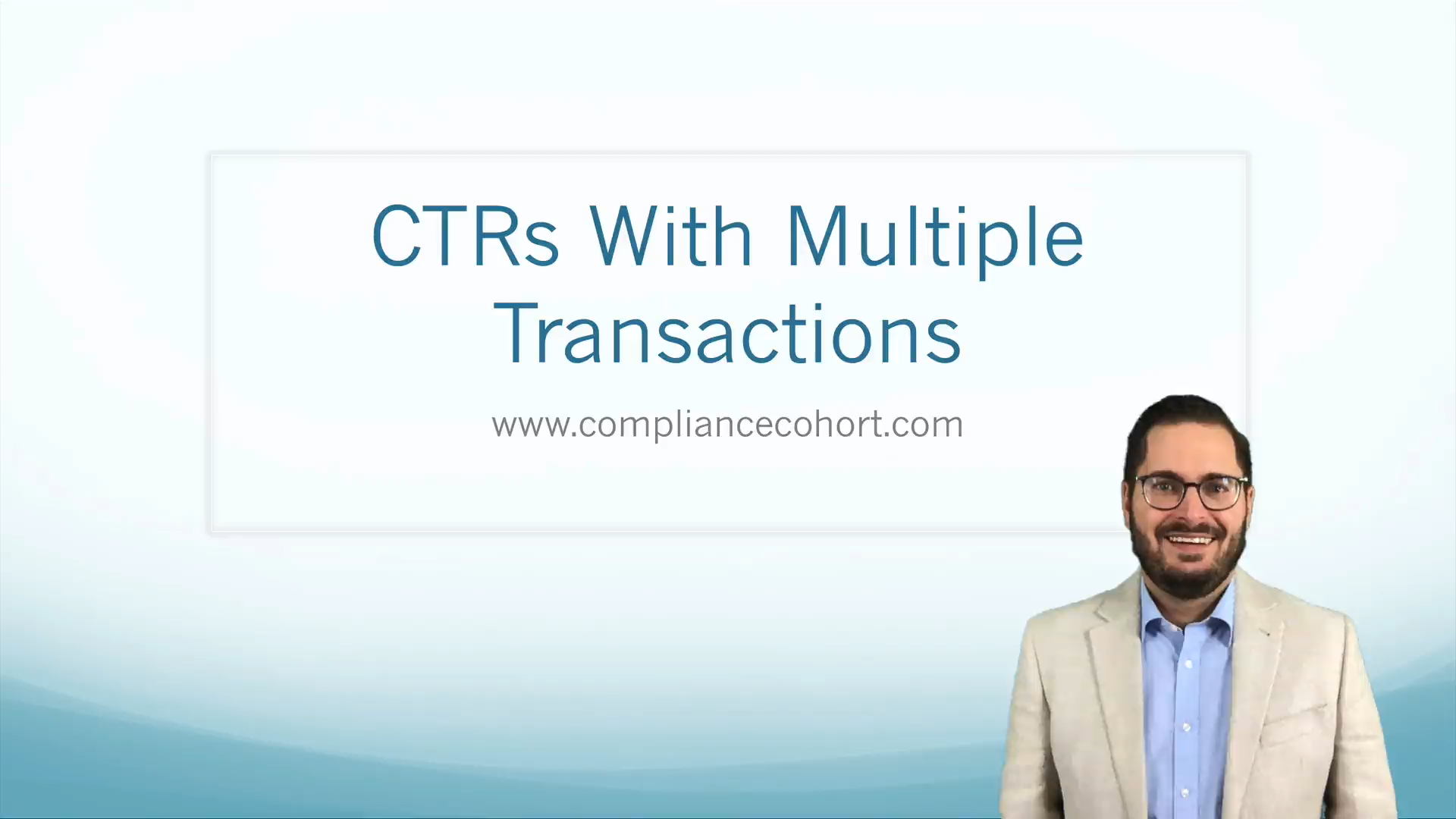CTRs with Multiple Transactions
In this Compliance Clip (video), Adam discusses some recent changes to CTR reporting. Specifically, FinCEN has updated its user guide in regards to reporting CTRs with multiple transactions. The guidance has flip-flopped a bit over the last few months, so you won’t want to miss this video.
For those interested in keeping up with detailed regulatory changes like this, take a look at our Quarterly Compliance Update program as, this exact topic is covered in our Winter 2020 Quarterly Compliance Update.
Video Transcript
The following is a transcript of this video.
This Compliance Clip is going to talk about CTRs with multiple transactions. You see, in the past few months, there have been some major changes when it comes to reporting CTRs with multiple transactions and the guidance has actually changed a couple of times, so I wanted to make sure you're aware of this. Before we go any further, I just wanted to say that this is actually part of our Winter 2020 Quarterly Compliance Update. This is kind of an example of what you'll get in that program. It's our quarterly compliance update that's included with all of our premium memberships. This is just an example of what you'll get in that program because we covered this exact topic.
Now, let's talk about this update. What FinCEN did is they updated their CTR User Guide to version 1.4 on October 1, 2019. In doing so, they kind of threw in this narrative on what they want us to do for multiple transactions and completing the CTR, specifically, checking the box in Part 1 based on multiple transactions. It's interesting. They threw in this language without really any release at all to notify banks and credit unions on what they expect to be done. They just threw this out there in their User Guide version 1.4.
What it said was that they wanted us to include a change in how the box for multiple transactions should be used. Specifically, the guidance said, “Multiple transactions includes all transactions made, whether reportable or not.” It says if a customer makes a $12,000 deposit and a $300 withdrawal, which of course, the $300 withdrawal is not reportable because only the deposit is, because you don't aggregate both deposits and withdrawals. You aggregate them separately for CTR purposes. They say then that Box 3 will be checked even though only $12,000 is reportable. That was the change.
They basically said that, look, we want you to call this multiple transactions and check that box on the CTR if there are multiple transactions that are not necessarily reported on the CTR. When I first read this, this was a shock to me because I had never understood the rules that way. And I thought, oh, I guess they want us to change this for some unknown reason. I guess that's what we have to do. So that was the change. I don't know if you saw that, but guess what? Don't worry if you're not doing that. Because what they ultimately did was on November 24, 2019, FinCEN updated their user guide again, to version 1.4.1, and they changed that language to essentially revert back to the way we were doing things before. So they appeared to fix those instructions from October 1, 2019.
What the instructions currently say at the time in this recording is that for example, if a customer makes a $12,000 deposit and also makes a $300 deposit on the same day, item 3 should be checked. However, if a customer makes a $12,000 deposit and a $300 withdrawal, item 3 should not be checked. So they clarified here that you're only doing this if it aggregates for CTR purposes. So if it's not aggregating for CTR purposes, such as a $300 withdrawal, you're not gonna check multiple transactions.
Here's an example of FinCEN throwing a tiny little change through the cracks and us having to keep up with that change. And again, this is something we keep up with in our quarterly compliance updates, that's really included in our premium membership.
That’s all I have for you today. Hope you enjoyed this video and we hope to see you soon.

